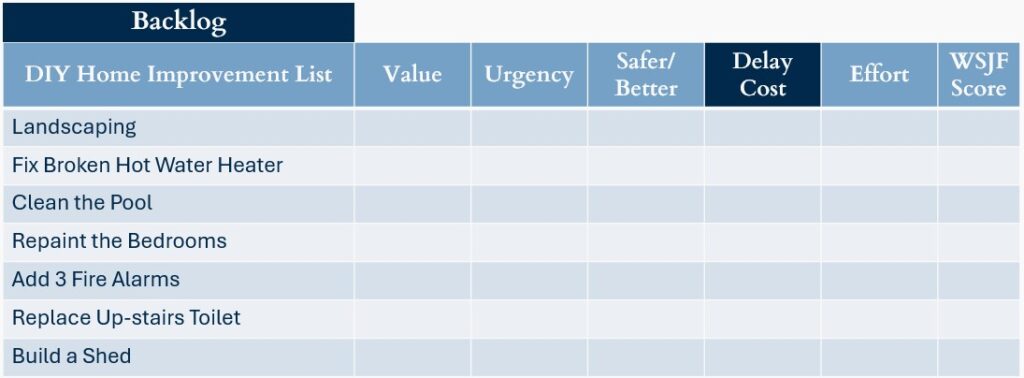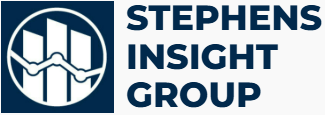
Workshop Navigation
WSJF Workshop — Usability
When to Implement
Each of the following Scenarios can be used to determine if now is the right time for you to conduct a WSJF Workshop.
Program Backlog: There are multiple teams operating under the SAFe Framework, getting ready to launch a new Agile Release Train. For PI Planning, leadership needs to confirm what the top priorities are for teams to work on in the upcoming quarter.
Post-Strategic Planning: A Strategic Themes Breakdown workshop was recently completed, and there is a laundry list of things to do in the upcoming year. This list needs to be quickly prioritized to ensure the highest value items are accomplished first.
Product Management New Features: Product Management has a long list of features they want to add to their product line. They need to quickly understand which features are most important to get to production first.
Unprioritized List: You have a list of items you need to complete, and not enough resources to do everything at once. You need to prioritize based on value and effort. Any Unprioritized list? Yes, you can even use WSJF at home for Do-It-Yourself (DIY) Home Improvement.

Prerequisites
Backlog – a list of Epics, Features or Projects that need to be prioritized Don’t over think it. If you have a list that needs prioritized, WSJF can be used.
Subject Matter Expertise – The right people who understand the items, and can provide a rough estimate of the value, risks, opportunity, and effort of each item
Roles & Responsibilities
Facilitator: takes an unbiased approach to the workshop, ensuring collaboration, clarifying scores and applying criteria consistently to each item in the list. Typically a Release Train Engineer, a Portfolio Manager, a Scrum Master, or someone equipped in leadership facilitates the WSJF Workshop.
Pro-Tip: Having a Leader or Individual Contributor, who is really close to the work, facilitate the WSJF can result in conflict and a biased outcome. Look for someone outside of the work to facilitate, especially for the first time.
Product Manager/Product Owner: provides clear business context and value insights for each item. This context can help stakeholders accurately assess business value, urgency, and safer/better components for delay cost.
Pro-Tip: Product Owners should focus on what is being built and why, not necessarily on how. While their input on business value is absolutely critical, be sure to get IT and Architecture’s input on the level of effort.
Key Stakeholders: bring domain knowledge, strategic priorities, and unique/critical perspectives to help determine the components of Delay Cost and Effort. These stakeholders, when included in the process, will not only feel included in the work, but may become champions and emissaries of the process for many years to come.
Pro-Tip: Determining the right Key Stakeholders is critical. Look for influencers, Leadership Partners, and those that will be most familiar with the items in the list to prioritize.
Subject Matter Experts: provide clarifying details on specific items in the list, ensuring the item is well-understood by everyone involved. They often provide business impact, dependencies, and technical feasibility.
Enterprise Architect: provides technical oversight into architectural dependencies, future enablement, and long-term scalability, helping ensure that prioritization decisions align with the organization’s technical strategy.
NOTE: Recommended Headcount: 5-10 people. Including additional people typically slows down the process without significantly improving the relative scoring and outcomes of the WSJF Workshop.
Scheduling and Timeline
WSJF should be used when no prioritization of the Backlog exists, and/or when there are concerns about the right business value being delivered first.
Key times to consider a WSJF Workshop for large programs and portfolios:
- After a list of projects or large scope items have been identified and 4+ weeks prior to the first PI Planning.
- On a regular, but infrequent basis – Quarterly, Semi-annually or Annually. Prior WSJF scores often need to be re-evaluated as markets and business strategy change. So conduct a WSJF workshop as often as needed while adding new projects and updating scores based on new information.
Ideally, a WSJF workshop precedes the work being done by 2-4 weeks. Items that are at the top of the list typically need to be reviewed further from both a technical and a product standpoint before teams should begin breaking down and completing the work.
Consulting Effort
If you are a consultant, understanding the amount of effort to conduct a WSJF session might inform how much time you reserve, and how much you charge for it. For those of you that do Value-Based contracts, the value the company receives from a WSJF session will vary considerably.
For organizations, working on the wrong item first can be quite expensive, and struggling to make a decision on where to start can be even more costly.
🔓 Consultant A Consultant Subscription is required to view this section. Please Login or Subscribe.
